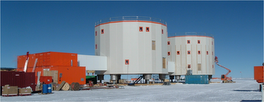Historical seismometers #2 - Galitzin
This is the second post in a series on my favorite seismometers on display at the Seismology Museum in Strasbourg. After the Weichert seismometers, let's look at something smaller, but no less spectacular: the Galitzin vertical and horizontal instruments (1910).
Built in St Petersburg in the early 20th century by Boris Galitzin, an inventor and prince of the Russian Empire, these instruments are the first to be based on the principles of electromagnetic induction. The photographs below show first the vertical, then the horizontal instruments in the museum. [Photos by Michel Dufloux]


The important innovation in these instruments compared to purely mechanical seismometers resides in the coil placed at the far end of the pendulum's rod. This coil oscillates in a magnetic field and by its displacement creates an electric induction current. A copper plate, fixed to the same rod as the coil, oscillates in the field of a second magnet and allows for electromagnetic damping. The induction current from the coil is transmitted to a galvanometer equipped with a mobile frame and a mirror. A beam of light shed on the mirror records the deflected beam on light-sensitive paper. You can find schematics of the horizontal Galitzin on this Seismology Museum page and also on this IRIS page.
The two instruments in the photographs were made in Saint-Petersburg, and were in use in the Strasbourg seismic observatory from 1910 to 1975. The masses are 10kg and 7kg respectively for the vertical and horizontal components, with natural periods of 24 and 12 seconds respectively. Comparing this with the characteristics of the Wiechert seismometers (1000kg, 8s period) shows that the Galitzins are lighter than their ancestors by a factor of 100!
-----
Keep up to date with the latest developments at http://sismordia.blogspot.com




No comments:
Post a Comment